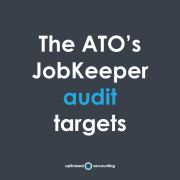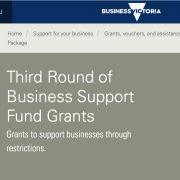The two cash flow boosts provided by the federal government to help businesses deal with the COVID-19 emergency have largely been overshadowed by the JobKeeper program, but they could provide valuable financial support to organisations that qualify.
Some businesses may have already noticed refund payments or tax credits appear in their tax account.
With the Australian Taxation Office (ATO) warning it will be watching for businesses trying to take advantage of the support measures, it’s worth understanding how the scheme works and what you may be entitled to.
Enhancing your cash flow
The Boosting Cash Flow for Employers scheme is a temporary measure for small and medium-sized employers and not-for-profit (NFP) organisations.
Financial support is being delivered in the form of tax and GST-free credits totalling between $20,000 and $100,000 to eligible businesses.
For most businesses, the cash flow boosts don’t come in the form of tax refunds, but credits against your tax liabilities instead. The tax credits are automatically applied to your business account when you lodge your business activity statement (BAS).
Eligibility for the tax credits
Your business may qualify for the cash flow boost regardless of whether it’s a small or medium entity, NFP, sole trader, partnership, company or trust.
To be eligible, your business must have held an Australian Business Number on 12 March 2020. Small and medium entities and NFPs must have an aggregated annual turnover under $50 million.
In addition, your business must have withheld tax from salary and wages; director fees; and eligible retirement, termination, and compensation payments; or undertaken voluntary withholding for contractors.
Also, the entity must have earned business income in 2018-19 and lodged its 2019 tax return on or before 12 March 2020. Alternatively, you must have made GST taxable, GST-free or input-taxed sales in a tax period since 1 July 2018 and lodged the relevant BAS on or before 12 March 2020.
Receiving your cash flow boosts
If you qualify, your business will receive its first tax credit through the BAS system from 28 April 2020.
Eligible businesses with a deferred BAS lodgment date due to the recent natural disasters won’t miss out. The ATO will apply your tax credit when you eventually lodge your activity statement.
Businesses qualifying for the initial cash flow boost will generally receive a second tax credit for the period July to September 2020.
How much you will receive
Your cash flow boost is generally the amount you withhold from salary and wages each monthly or quarterly period. In 2019-20, eligible businesses will receive a credit equal to 100 per cent of the tax withheld, up to a maximum of $50,000.
The minimum credit for a business is $10,000, even if the tax required to be withheld is zero. In this situation, you will be ineligible for subsequent boosts until your withholding exceeds $10,000 for a relevant period.
If your business lodges activity statements in 2020-21, your second payment will be based on the value of your initial cash flow boost (up to a maximum of $50,000).
Boost amounts are automatically applied to your business’s tax account and are used to reduce your BAS tax liabilities. You will only receive a refund from the ATO if the credit amounts exceed your business’s other tax liabilities or you overpay your activity statement.
The tax man is watching
Although the tax credits will provide valuable financial support for businesses under pressure due to COVID-19, the ATO warns it is paying close attention to the scheme. It says some businesses are trying to artificially create or inflate an entitlement to the support measures.
Business restructures or changes to the way employees are paid will attract the ATO’s attention. As will splitting your business to get below the $50 million turnover threshold, or increasing wages paid in a particular month to maximise your cash flow boost.
The ATO also intends to utilise employee data it now has available through the Single Touch Payroll system to identify employers doing the wrong thing.
Let’s stay in touch
Sign up to our monthly newsletter to receive due dates, news, tax tips and other important things that we think are useful and interesting.
This article was written by a third party.











